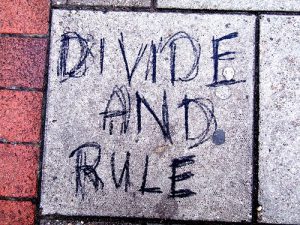Dramatic speeches, lively debates, predictions of an impending Armageddon for traditional MR have all been met with a collective yawn.
There seems something noble in the idea of an umbrella organization that would lead/protect and strengthen the MR industry. But nobility doesn’t always take into consideration practicality and most importantly; need.
 Personally, I think we’re doing just fine. Which is a good thing because I don’t see how any one organization can take on a Lord of the Rings approach to rule them all.
Personally, I think we’re doing just fine. Which is a good thing because I don’t see how any one organization can take on a Lord of the Rings approach to rule them all.
The rise of big data, text analytics, behavioral data, co-creation, neuromarketing and don’t even get me started on mobile have splintered our industry beyond recognition.
That’s why I think it’s damn near impossible for one organization to put a universal arm around all this chaos. And that’s not a bad thing. Niche organizations should focus on the concerns of their members and stay on top of issues for them.
Organic flow is happening all the time. We see it all the time in our client’s industries, whether they’re in media, energy, pharma, CPG or transportation, the business model is constantly evolving.
For my fellow researchers, the only constant is the essence of our mission; providing customer intelligence to inspire, inform and make better decisions.
The larger trade orgs have to accept the fact that they can’t simultaneously stand for change while at the same time serving the current needs (e.g. quality control, government lobbying) of their core base. Therefore, they will toe the line and try to serve both factions by providing a vision for the future while at the same time securing a safe haven for those who chose to slog it out with yesterday’s toolkit.
This will open the doors wide open for more and more niche orgs to emerge. Not to mention the proliferation of niche news sources which seem to pop up every few months.
In another 20 years, we’ll still be talking (and talking) about the same crisis. There will be a group advocating for the quick adoption of the latest tools. There will be a larger group using the tools of the mid-21st century researcher, all of which were considered cutting edge way back in 2015.
Perhaps by 2035, a hi-tech research firm will figure out a way to do virtual man on the street interviews using pop-up holograms. Which simply means a century of breakthrough technology will allow us to achieve exactly what George Gallup was doing in 1935. http://www.pbs.org/fmc/segments/progseg7.htm
In the words of “R.E.M”, it’s the end of the world as we know it, and I feel fine.